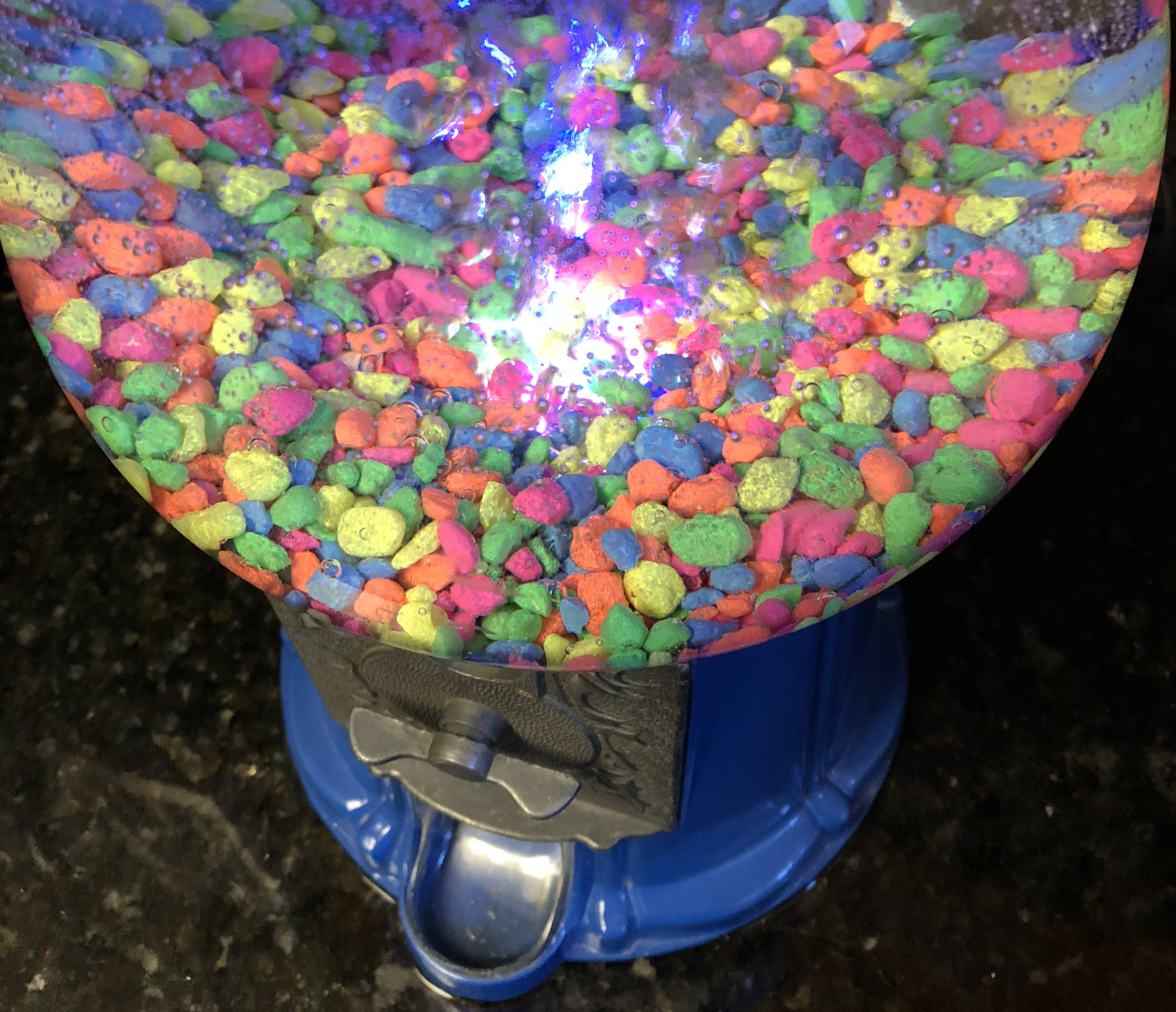Looking to geek out over a unique craft (without breaking the bank)? This fun project may be just the ticket. With limited experience necessary, you too can make this unique (and downright sweet) aquarium.
Want proof? Well, a couple (semi-un-handy) folks from the DAPSmagic team (@mr_camjaxn and @mounenii) were able to make this… and quite frankly, if we could do it, you can too!
Concept
There’s nothing quite like a vending machine, is there? It harkens back to when a quarter was the height of kid-wealth, and was a veritable skeleton key to colorful sweets exceptionally flimsy toys!
…I- I really like vending machines, you guys.
Some, like old school gum ball machines, seem a natural option for an aquarium. It’s certainly been done, of course. A cursory Google will bring up a good few dozen pictures. As to the how, well.. That’s half the fun, isn’t it?
Supplies
Gumball machine-
There are a LOT of options out there, so it really comes down to what look you’re going for. Here’s a few general tips:
-Consider the material the “dome” portion of the machine is made out of. Glass is probably your best bet, as it’ll be durable, and is least likely to seep unhealthy stuff in to your new fish friend’s home!
-Size is key! Depending on the type of fish you’re getting, you’ll need more or less room, but just about every water critter needs some space to stretch out their fins. Try to avoid the smaller, toy-sized machines.
-You can always find something easily online (like this), but it’s a lot more fun to go out and find something on your own! Seek out antique/thrift/resale stores in your area, and support your local businesses! You’re bound to find something unique, and usually for a lot less (Our tank came from a local antique mall, and only cost $14!).
Tank Base-
Now, there’s a few different directions you can go here, from round-cut glass, to various plastics, to just about anything that’ll keep the water in. We chose to go with Lexan (Home Depot, $5), as it is aquarium safe, and a bit easier to manipulate. Also, we were able to add holes to wire some of our electronics and piping through, giving the finished product a nice clean look.
Adhesive-
Aquarium safety is key here, as a lot of glues can have some bad stuff for fish in it! We chose an aquarium-specific sealant (Home Depot, $5), so it would hold well, and keep the tank inhabitants healthy.
Lighting/Aerator (optional)-
Depending on the type of fish you’re looking to add, you may or may not need the bubbles. I will say, they look pretty cool, so maybe plan around that! We opted for a light/airstone combo unit (PETCO, $13), and a compact air pump (PETCO, $13) to fit in the base of the gumball housing.
Decor-
What you stick in your tank will really bring it all together, and there are a thousand options! I know, broken record here, but make sure whatever you do want in there is water-safe (things like metal and certain plastics may be a bad choice). If you do find the perfect thing, and think it might be unsafe, you can always take the extra step to seal it properly! We opted for a simple rainbow gravel (PETCO, $3), to keep in theme for the candy machine.
Tools-
If you have a basic set of screwdrivers, hammers and the like, you should be just fine. We were surprised to find how useful a pair of good kitchen shears were! Of course, high-powered tools can and will make certain things a bit easier, but you should be able to do what you need with what you have.
Total cost for our build: $53
Construction
First, disassemble your machine to see what you’re working with. A lot of the innards, like the dispenser rounds and coin collectors can probably be ditched. Ask yourself, “Will this change the look from the outside of the machine?” If not, free up some space/weight!
Builder’s note: IF you’re feeling particularly creative, we saw a few options on how some of the moving parts could still be used. Keeping just the base of the spinning action could make for a really neat food dispenser for your fish, for example! Our unit was a bit beat up on the inside, and we had a few more bits to tuck away, so we opted against.
Next, trace out your tank base on your desired material. Be sure to measure the base of your machine, to see if your new tank bottom will fit well! Ours came with an o-ring under the glass, which we were able to remove to equal out the added space. When cutting out the base, patience is key! Take your time, and be safe, especially if you’re using pointy sharp things.
Also, if you’ll be wiring through as we did, be sure to add those openings at this point.
Be sure to cover whatever surface you’re working on, and prepare to bind your new base to the bowl. Make sure everything is clean (dust can mess up a good, watertight seal, then add a thick bead of your adhesive to the bottom of the bowl. We chose to secure our wiring in to the unit itself at this point, for ease of sealing. Once you’ve filled in all the space, secure the pieces together with some weight (our aquarium gravel worked well), and let it cure. The curing time will be listed on the packaging of your adhesive, so be sure to follow it!
Once the curing time is over, it’s time to assemble! Add/attach any of the extras you’re using (our aerator pump is tucked in the base, meaning the piping had to be cut and threaded in. If you’re going this route as well, be sure to add a “drip loop” and a directional safety valve so you don’t accidentally burn out your motor by feeding water back in to it!), and check to make sure you have a watertight seal. Easiest way to do that is with a bit of water. Let it sit in the bottom of the bowl, and make sure you don’t have any drips. Then add your gravel and extras, fill it up, and enjoy!
***
If you make this yourself, we’d love to see it! Comment below so we can appreciate your work. Have an idea for something crafty to make next, let us know!






